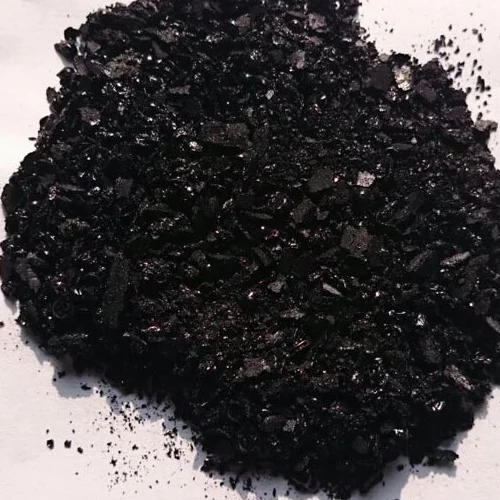Exploring the Beauty of Chinese Natural Indigo-Dyed Denim Fabrics for Sustainable Fashion
The Revival of China’s Natural Indigo Denim A Blend of Tradition and Modernity
In recent years, the fashion industry has witnessed a significant shift towards sustainability and eco-conscious practices. One of the most captivating aspects of this movement is the resurgence of natural indigo dyeing, particularly in China, a country with a rich history of indigo production. This article delves into the fascinating world of China’s natural indigo denim, exploring its cultural significance, production techniques, and the contemporary relevance of this age-old craft.
Historical Significance
Indigo dyeing has deep roots in Chinese history, dating back thousands of years. Traditionally, the indigo plant—known scientifically as *Indigofera tinctoria*—was cultivated and harvested for its vibrant blue dye. This dye was prized not only for its color but also for its durability and resistance to fading. In ancient China, indigo was used to dye textiles for clothing, tapestries, and decorative pieces, becoming a symbol of wealth and status.
Through the centuries, the techniques of indigo dyeing evolved, deeply embedding themselves into the fabric of Chinese culture. Various regions became known for their distinct styles and methods, often passed down through generations. Unfortunately, with the advent of synthetic dyes in the 20th century, traditional practices began to decline, and many artisans abandoned natural indigo production.
The Comeback of Natural Indigo
In recent years, however, the global demand for sustainable and ethically produced materials has paved the way for a revival of natural indigo denim in China. This resurgence is not just about aesthetics; it embodies a broader movement towards environmental responsibility within the fashion industry. Brands are beginning to recognize the ecological advantages of natural dyes, which are much less harmful than their synthetic counterparts. Moreover, consumers are becoming increasingly aware of the impacts of their purchases and are seeking alternatives that reflect their values.
The revival of natural indigo denim is more than a trend; it's a return to roots. Artisans and designers are re-embracing traditional techniques, often blending them with modern designs to produce unique, collectible pieces. This fusion not only honors age-old craftsmanship but also introduces indigo dyeing to a new generation of fashion enthusiasts. Local communities are increasingly supporting these practices, promoting handmade quality over mass production.
china natural indigo denim

Production Techniques
The process of creating natural indigo denim is labor-intensive and requires meticulous care. First, the indigo plants are harvested and fermented, which produces the dye used to color the fabric. Unlike synthetic dyes, natural indigo goes through a complex fermentation process that can take several weeks. This method results in depth and richness of color that is hard to replicate with chemicals.
Once the dye is ready, it is time to dye the fabric. This typically involves an immersion process, where the denim is soaked in a vat of indigo multiple times to achieve the desired shade, usually resulting in a deep, rich blue. As the fabric dries and is exposed to oxygen, the color transforms, revealing the distinctive hue for which natural indigo is known.
Eco-Conscious Fashion
The resurgence of natural indigo denim aligns perfectly with the rising trend of eco-conscious fashion. Consumers are seeking transparency in production and the materials they wear. Brands that utilize natural indigo are not only providing high-quality products but are also contributing positively to the environment by reducing their carbon footprint.
Moreover, this movement doesn’t stop at eco-friendliness; it also supports local artisans and keeps traditional craftsmanship alive. Many brands are partnering with local indigo farmers and dyers, ensuring that the benefits of this revival reach the communities that have preserved these techniques.
Conclusion
In summary, the revival of China’s natural indigo denim represents a beautiful intersection of tradition and modernity. It highlights a growing appreciation for sustainability, craftsmanship, and cultural heritage in the fashion industry. As consumers become more conscious of their choices, natural indigo denim stands out as a symbol of sustainable style—a testament to the enduring value of heritage in the contemporary world. By choosing natural indigo, we are not just opting for a color but embracing a story that spans centuries, celebrating craftsmanship, and supporting a healthier planet.
-
The Timeless Art of Denim Indigo Dye
NewsJul.01,2025
-
The Rise of Sulfur Dyed Denim
NewsJul.01,2025
-
The Rich Revival of the Best Indigo Dye
NewsJul.01,2025
-
The Enduring Strength of Sulphur Black
NewsJul.01,2025
-
The Ancient Art of Chinese Indigo Dye
NewsJul.01,2025
-
Industry Power of Indigo
NewsJul.01,2025
-
Black Sulfur is Leading the Next Wave
NewsJul.01,2025

Sulphur Black
1.Name: sulphur black; Sulfur Black; Sulphur Black 1;
2.Structure formula:
3.Molecule formula: C6H4N2O5
4.CAS No.: 1326-82-5
5.HS code: 32041911
6.Product specification:Appearance:black phosphorus flakes; black liquid

Bromo Indigo; Vat Bromo-Indigo; C.I.Vat Blue 5
1.Name: Bromo indigo; Vat bromo-indigo; C.I.Vat blue 5;
2.Structure formula:
3.Molecule formula: C16H6Br4N2O2
4.CAS No.: 2475-31-2
5.HS code: 3204151000 6.Major usage and instruction: Be mainly used to dye cotton fabrics.

Indigo Blue Vat Blue
1.Name: indigo blue,vat blue 1,
2.Structure formula:
3.Molecule formula: C16H10N2O2
4.. CAS No.: 482-89-3
5.Molecule weight: 262.62
6.HS code: 3204151000
7.Major usage and instruction: Be mainly used to dye cotton fabrics.

